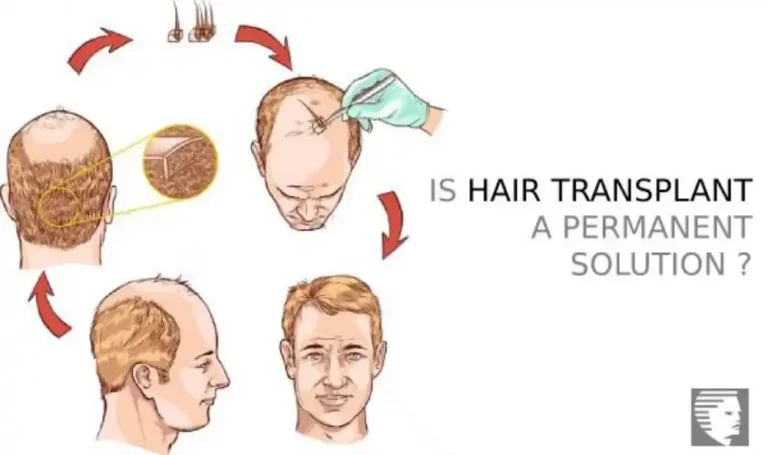Hair Transplant Gone Wrong?
You may have heard several horror stories of hair transplant gone wrong. Mainly, unlicensed hair transplant clinics with underqualified physicians and medical staff are to blame for failed, unnatural results.
Although surgical hair restoration treatment is quite expensive, some clinics lure in people with affordable rates, which often leads to failed transplant surgery. On the bright side, modern technology has dramatically increased the success rate of hair transplant surgeries.

Can Hair Transplants Go Wrong?
With modern technology, the success rate of hair transplant surgery is closer to 95%. It is rare for a hair transplant to go wrong, however, it could be a possibility if done by a less experienced surgeon. It should be noted that there is a huge difference between a failed hair transplant and one that did not yield desired results.
It is not a common occurrence that a complete hair transplant will be unsuccessful, however, a small proportion of newly transplanted follicular hair grafts often do not take root. In addition, a failed transplant surgery is characterized by a lack of hair growth, unaesthetic looks, scalp infection, scarring, and unnatural growth patterns.
Factors That Contribute to Failed Transplant Surgery
There are a number of factors that contribute to the failure of hair transplant surgery.
- Patient’s Ineligibility – Not all people meet the eligibility criteria for hair transplant surgery. The patient must be healthy and within the age, limits to achieve the desired outcome. Moreover, the patient must not be suffering from blood-borne disease and have a healthy donor site. Ignoring these factors often leads to excessive hair loss after the surgery.
- Unreasonable Expectations – More often than not, a person considers the hair transplant unsuccessful if it did not meet their unrealistic expectations. To avoid confusion, communicate with the hair transplant surgeon, and discuss your expectations. A qualified surgeon will help you understand, what are limitations and the expected results.
- Under-Qualified Surgeon – Choosing an unlicensed clinic and an underqualified surgeon is the most common reason for hair transplant procedures going wrong. Inexperienced surgeons often use poor surgical techniques and tools which result in unsatisfactory results.
- Graft Handling – Hair follicles are extremely delicate, therefore should be handled carefully by the surgeon and medical staff. These follicular units can easily break and get damaged if not handled with care. In addition, grafts eventually die if left out for long before the surgery.
- Negligence in Post-Op Care – If the patient fails to follow the aftercare instructions, it will most likely affect the outcome of the surgery. Aftercare tips are vital for the growth of new hair while negligence in post-op care may damage the hair follicles and inhibit the growth of new hair.
Most people have high expectations because the surgeon provided misleading information to scam out thousands of dollars. The success of surgery depends highly on the right clinic with modern facilities and medically trained staff.

What Could Go Wrong With Hair Transplant?
As new technology is continually invented, hair transplants have become more effective with higher success rates and provide expected results. Still, there are some common problems that may arise during or after the surgery.
- Necrosis – It is a medical term used for the death of body tissue due to an inadequate supply of blood. A bad hair transplant procedure results in the death of skin tissues at the scalp. Scalp necrosis leads to excessive hair shedding which can not be fully cured.
- Low rate of Regrowth – The success and failure of a hair transplant procedure majorly depends on the important stages of extraction, storage, and transplantation of hair follicles.
- Overharvesting – Before surgery, the surgeon plans how many grafts are to be harvested and the donor site. An incompetent surgeon often overestimates the number of grafts needed which leads to bald patches, undue pain, and longer recovery time.
- Scarring – Only experienced surgeons know how to perform surgery without leaving unnecessary scars. It should be noted that the FUT leaves more noticeable scars than the FUE procedure.
Conclusion
Thanks to modern technology, hair transplant is a low-risk procedure that rarely goes wrong. However, there are some short-term side effects similar to other surgical procedures. The success of the hair transplant surgery depends highly on the qualification and experience of the selected surgeon.







